39 reading food labels cholesterol
Easy Guide to Understanding Food Labels When You Have High Cholesterol ... This means that your food may contain trans-fat even if the food label says 0 gram. Therefore it's important to check the ingredient list (more on this later). Cholesterol guidelines currently recommend having not more than 300 milligrams of cholesterol per day, and if you have heart disease, aim for less than 200 milligrams per day. 2. How to Read Food Labels Without Being Tricked - Healthline This label says very little about whether a product is healthy. For example, organic sugar is still sugar. No added sugar. Some products are naturally high in sugar. The fact that they don't have...
How to Read the Nutrition Facts Label on Packaged Foods - WebMD Limit salt to 2,300 milligrams (about 1 teaspoon) daily. If you have high blood pressure, kidney disease, or diabetes, or are African-American or older than 51, your daily limit is lower: 1,500...
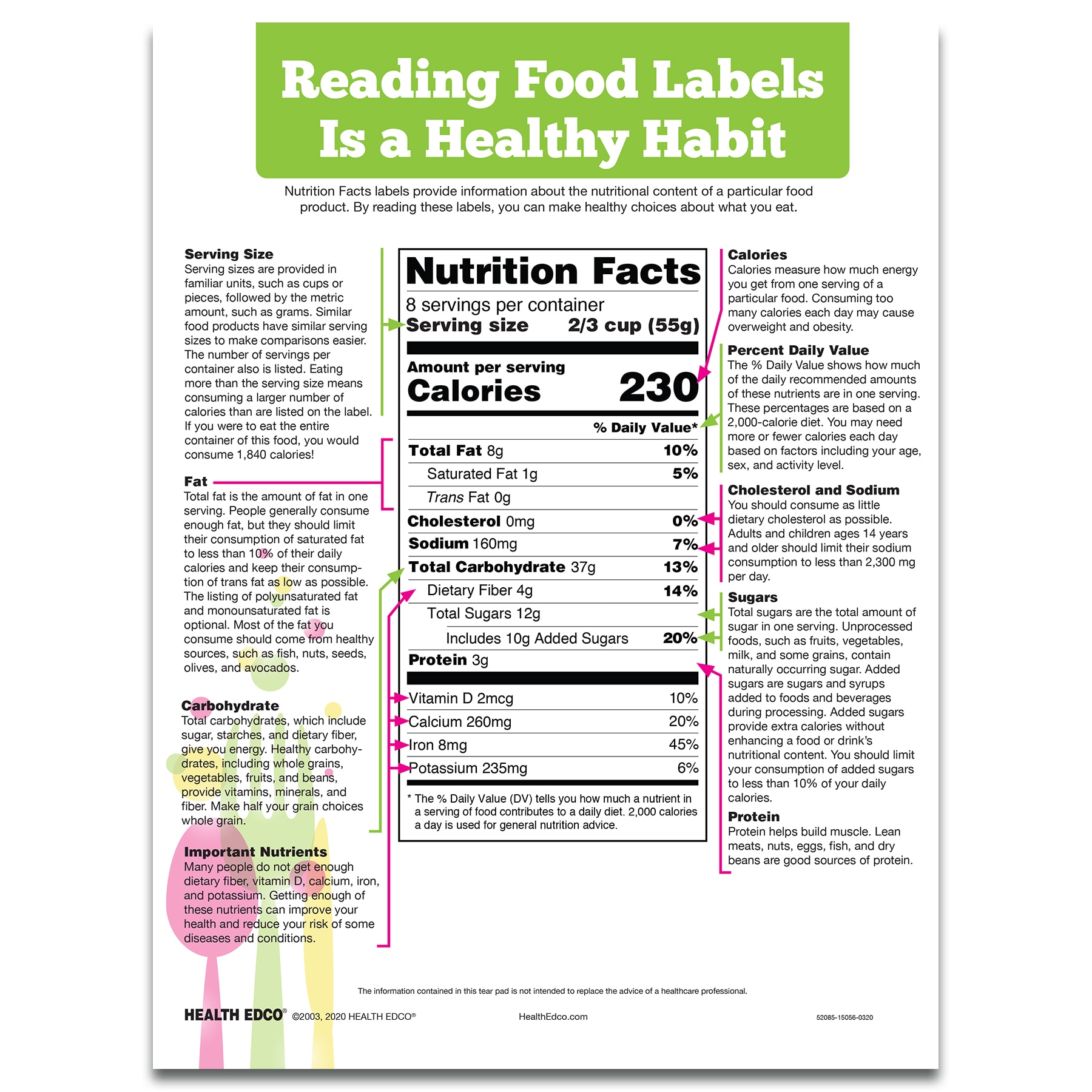
Reading food labels cholesterol
Food Labels: Fat & Cholesterol | Home & Garden Information Center The 2015 Dietary Guidelines for Americans recommends the following intakes of fat and cholesterol every day: total fat—20 to 35% of calories, depending on age and gender (65 grams for the 2,000-calorie intake level used in the Daily Value)* saturated fat—less than 10% of calories** trans fat— keep as low as possible How To Read Food Labels - 10 Tips - Pritikin Weight Loss Resort Here are the basics for how to read food labels, consolidated into 10 quick-reference tips, compliments of Kimberly Gomer, Director of Nutrition at the Pritikin Longevity Center in Miami, Florida. These 10 tips are all about helping you shed excess weight, take good care of your heart, and live well. 1. How To Read Cholesterol Labels - HealthyCholesterolClub.com Eating too much unhealthy fat saturated and trans fats can increase your risk for heart disease, high cholesterol, obesity, high blood pressure, type 2 diabetes, and cancer. Saturated fat comes mainly from meat, poultry with skin, whole milk dairy products, coconut and palm kernel oils, and stick margarine.
Reading food labels cholesterol. Reading Food Labels | Saint Luke's Health System Reading Food Labels. Look for the Nutrition Facts label on packaged foods. Reading labels is a big step toward eating healthier. The tips below help you know what to look for. ... But many foods high in cholesterol are also high in saturated fat. So it is recommended to limit saturated fat in your diet. Calories from fat. How to Read Food Labels for a Heart-Healthy Diet Partially hydrogenated oil Omega-3 fatty acid Olive oil Butter What's important to know about the first ingredient listed on a label? It's the healthiest. It's in the largest quantity. It's first due to alphabetical order. What words should I look out for that mean sugar? High-fructose corn syrup Agave nectar Dehydrated cane juice All of the above PDF How do I read food labels? - American Heart Association read the Nutrition Facts labels on the foods you purchase. Compare the nutrients and calories in one food to those in another. The information may surprise you. Make sure you ... • Cholesterol — is found in foods that come from animals, such as meats, poultry, seafood, eggs and full-fat dairy products. The FDA's Dietary Guidelines How to read food labels - Heart Foundation NZ The star rating is calculated using an algorithm that takes into consideration a number of positive and negative nutrients for a particular food. The positive elements include protein, fibre, fruit, vegetable, nut, seed and legume content. The negative elements include energy, sodium, saturated fat, and sugar.
How to Read Nutrition Labels - Roswell Park Comprehensive Cancer Center This is where knowing how to properly read nutrition labels can come in handy. At a minimum, the 'Nutrition Facts' label must contain the amount of total fat, saturated fat, trans fat, cholesterol, sodium, total carbohydrates, dietary fiber, sugar, protein, vitamin A and C, calcium, and iron in one serving. Here's the top five things to look ... Why Is Reading Food Labels Important? | livestrong The nutrition label provides key information such as serving size, calories, total fat, saturated fat, cholesterol, protein, carbohydrate and vitamin content. The label also contains a list of the ingredients. This information helps you stay on track with your daily targets. It also helps you avoid certain ingredients if you have a food ... How To Read Food and Beverage Labels - National Institute on Aging Although frozen and canned fruits and vegetables have food labels, fresh varieties often do not. You can find nutrition information for fresh vegetables and fruits on the USDA website. Or you can call the U.S. Department of Agriculture's Food and Nutrition Information Center at 301-504-5414. Understanding percent Daily Value (% DV) How to read food labels: MedlinePlus Medical Encyclopedia If a label says that a food has 100 mg of sodium, this means it has about 250 mg of salt. You should eat no more than 2,300 mg of sodium per day. This is the amount of sodium that is in 1 measuring teaspoon of table salt. Ask your health care provider if you should have even less. The % daily value is included on the label as a guide.
How to Read Nutrition Facts Labels the Right Way - GoodRx However, foods that contain less than 0.5 g per serving are allowed to list the trans fats as 0 g on a nutrition label, so consumption of these fats is still possible. Foods that may contain small amounts of trans fats include: Packaged baked goods. Ready-to-eat frozen meals. Refrigerated doughs. Fried foods. Margarine. Shortening How to Read Everything on the Nutrition Facts Label - Food Network When you take a look toward the top of the Nutrition Facts label you'll see the servings per container and the serving size. Pay close attention to the serving size. Pay close attention to the ... Understanding Food Nutrition Labels | American Heart Association 1 - Start with the serving information at the top. This will tell you the size of a single serving and the total number of servings per container (package). 2 - Next, check total calories per serving and container. Pay attention to the calories per serving and how many calories you're really consuming if you eat the whole package. Reading food labels: Tips if you have diabetes - Mayo Clinic Look for foods with fats, cholesterol and sodium on the low end of the Daily Value; keep fiber, vitamins and minerals on the high end. If your doctor or registered dietitian recommends more or less than 2,000 calories a day, you may need to adjust the percentage accordingly — or simply use the percentage as a general frame of reference.
How to read food labels | healthdirect Saturated fats are linked to an increased risk of heart disease and high blood cholesterol, so it is especially important to choose foods low in saturated fat. Carbohydrate (total): Carbohydrates are found in all fruit and vegetables, all breads and grain products, and sugar and sugary foods. You need carbohydrates for energy. Click to open PDF.
How to understand food labels | Eat For Health Sometimes labels will include nutrition content claims like 'low fat', 'reduced salt' or 'high fibre'. These claims can only be used if the food meets certain criteria. For example, with a 'good source of calcium' claim, the food must contain more than a set amount of calcium. While nutrition content claims can generally guide ...
HIE Multimedia - How to read food labels - A.D.A.M Food labels give you information about the calories, number of servings, and nutrient content of packaged foods. Reading the labels can help you make healthy choices when you shop. About Food Labels. Food labels tell you the nutrition facts about the foods you buy. Use the food labels to help you choose healthier foods. What to Look for
PDF A Guide to Reading Food Labels - University of Rochester Food Labels Reading food labels can help you make wise food choices. Most foods list nutrition information on the package label, called Nutrition Facts. ... They may raise your blood cholesterol level, which can increase your risk of heart disease. Choose foods containing less than 10% of calories from saturated fat.
How to Read Food Labels : Food Network | Food Network The percent of the Daily Value that is listed on the upper portion of the food label is yet another way to gauge how much saturated fat and cholesterol are in the foods that you buy and eat. If a...
How to Understand and Use the Nutrition Facts Label | FDA Dietary fiber, vitamin D, calcium, iron ad potassium are nutrients on the label that Americans generally do not get the recommended amount of. They are identified as nutrients to get more of....
Making Sense of Food Labels | ADA - American Diabetes Association Reading labels can help you find these hidden sources and compare the sodium in different foods. Whether you have diabetes or not, 2300 milligrams (mg) or less per day is the general recommendation. If you have high blood pressure, talk with your health care team to find out the best goal for you. List of ingredients
How To Read Nutrition Labels - Mayo Clinic Diet Aim for low in saturated fat, trans fat, cholesterol, sodium, and added sugars. High is 20% or more. Aim high in vitamins, minerals and dietary fiber. 4. Check the ingredients Ingredients are listed by volume. The higher up on the list an ingredient is, the more of it the product contains. Make sure sugar isn't one of the first ingredients listed.
How to Tell if Foods Are Low or High Cholesterol - Verywell Health Each food label should include milligrams (mg) of cholesterol per serving. Don't forget to look at the serving size as well. Sometimes products can seem low in cholesterol, but if you eat more than the recommended servings at one sitting, then you can end up consuming a lot more cholesterol than you intended.
How-To Guide for Reading Food Labels - The Society for Cardiovascular ... Cholesterol - Cholesterol is listed on the label in milligrams. A low cholesterol food is defined by the Food and Drug Administration as 20 milligrams or less per serving. When reading labels, it may be helpful to remember that cholesterol only comes from animal products. You may also see "0 grams" of cholesterol and at first think a product is ...
Reading Food Labels - What You Need to Know - Drugs.com Reading labels may also help you to eat less of the nutrients that could cause health problems. Eating too much fat, saturated (SACH-er-ay-ted) fat, trans fat, cholesterol (koh-LES-ter-ol) and sodium may increase your risk for certain health problems. Some of these health problems are heart disease and high blood pressure.
Reading Food Labels | ADA - American Diabetes Association The Nutrition Facts labels on foods are really the key to making the best choices. We'll cover the basics so that these labels make shopping easier for you. You've heard it all. From carb-free to low-carb, to whole and empty carbs, it's hard to know what it all means. Blood sugar highs and lows aren't always easy to understand.
How To Read Cholesterol Labels - HealthyCholesterolClub.com Eating too much unhealthy fat saturated and trans fats can increase your risk for heart disease, high cholesterol, obesity, high blood pressure, type 2 diabetes, and cancer. Saturated fat comes mainly from meat, poultry with skin, whole milk dairy products, coconut and palm kernel oils, and stick margarine.
How To Read Food Labels - 10 Tips - Pritikin Weight Loss Resort Here are the basics for how to read food labels, consolidated into 10 quick-reference tips, compliments of Kimberly Gomer, Director of Nutrition at the Pritikin Longevity Center in Miami, Florida. These 10 tips are all about helping you shed excess weight, take good care of your heart, and live well. 1.
Food Labels: Fat & Cholesterol | Home & Garden Information Center The 2015 Dietary Guidelines for Americans recommends the following intakes of fat and cholesterol every day: total fat—20 to 35% of calories, depending on age and gender (65 grams for the 2,000-calorie intake level used in the Daily Value)* saturated fat—less than 10% of calories** trans fat— keep as low as possible




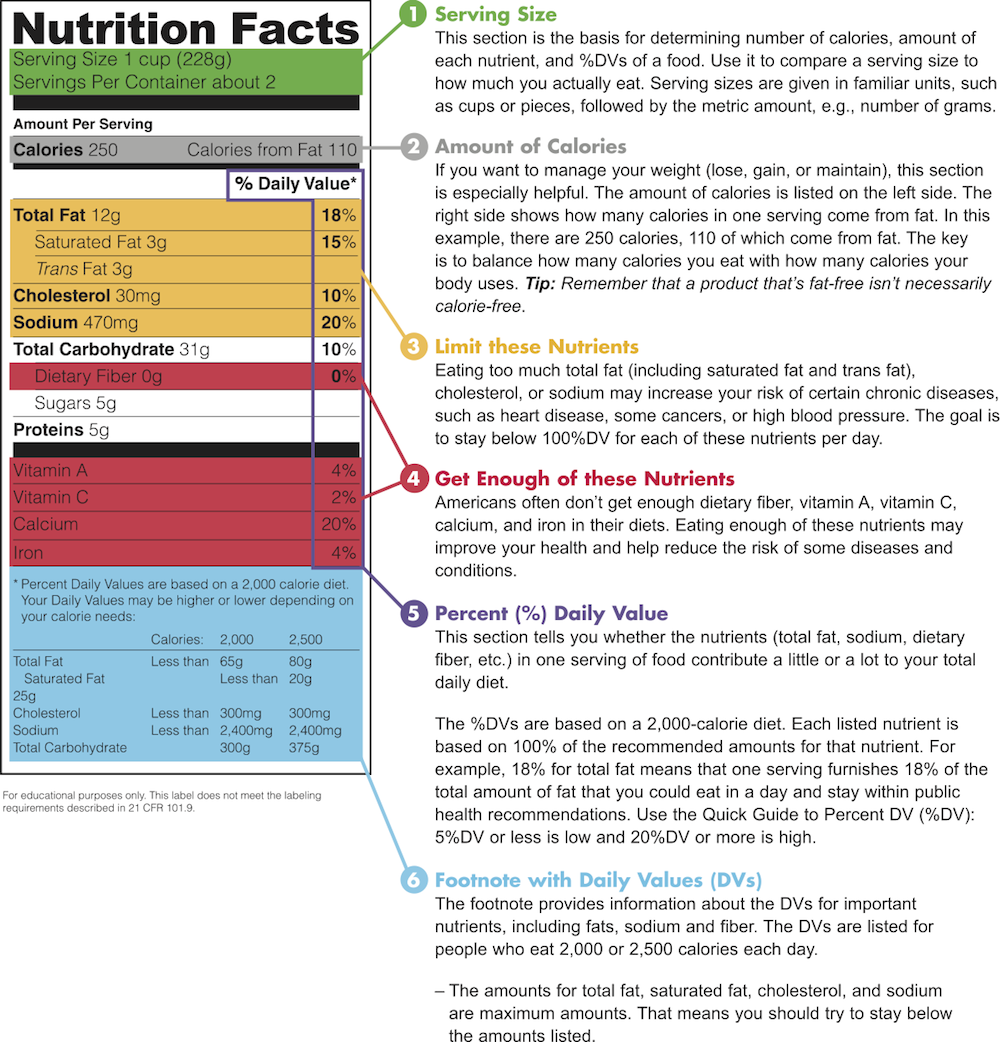
:max_bytes(150000):strip_icc()/egg-56d0d4085f9b5879cc7196f6.jpg)


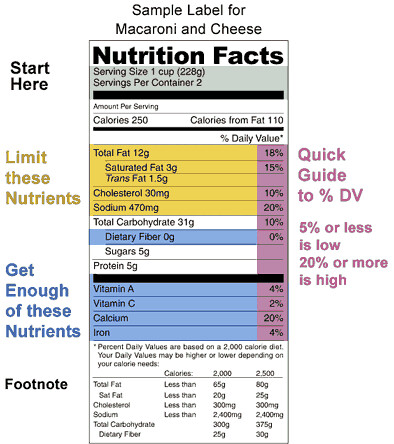



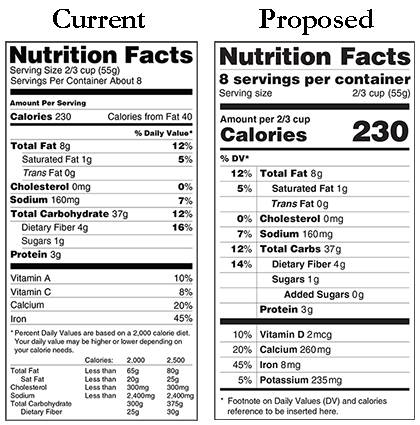
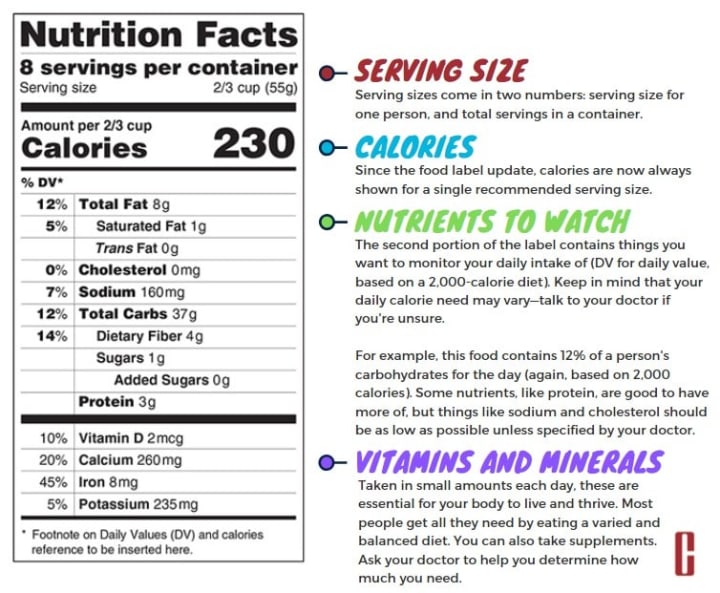
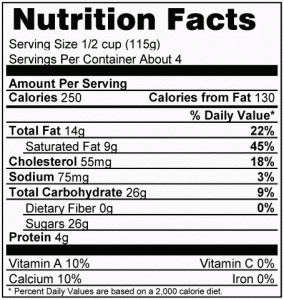

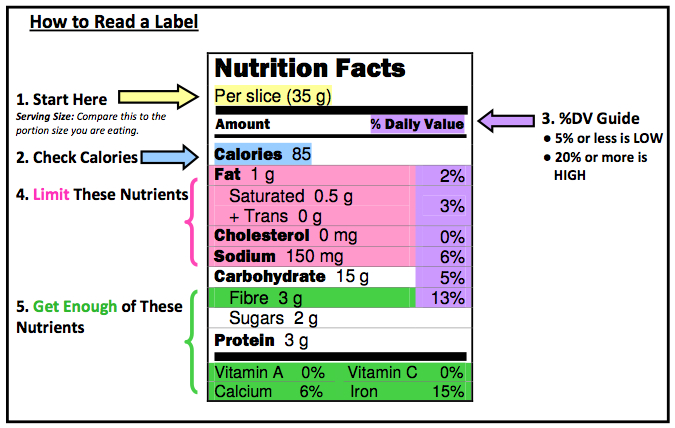




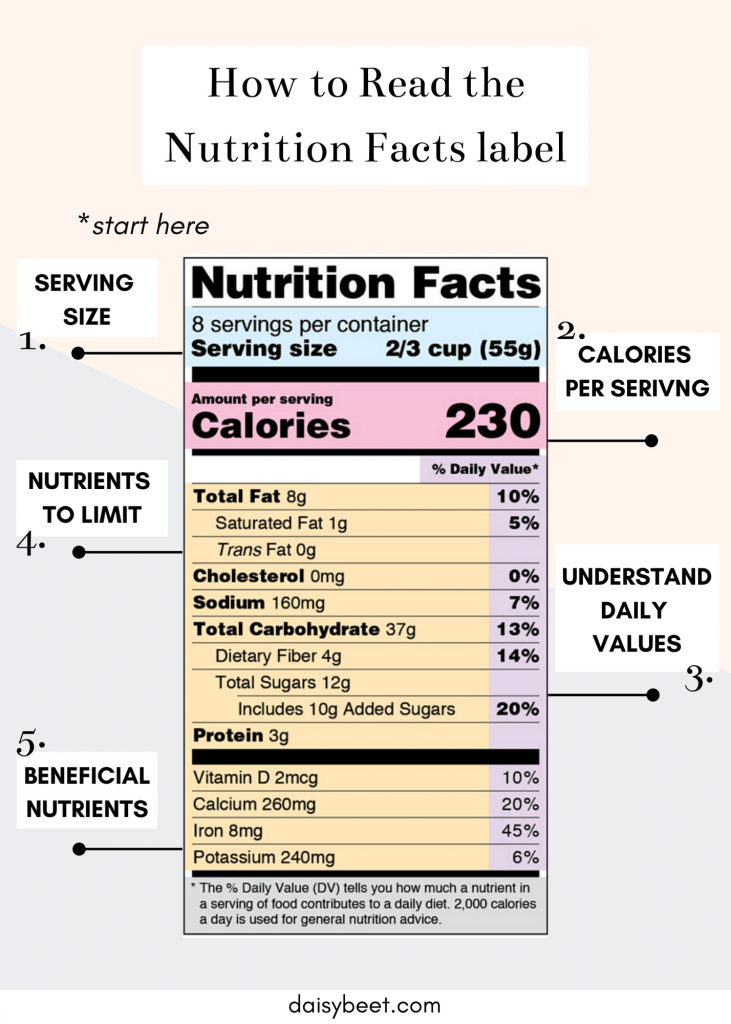


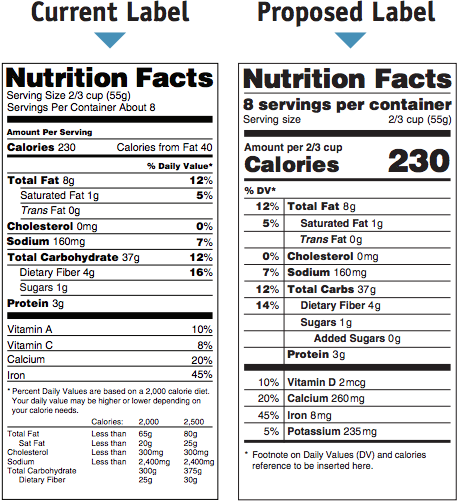
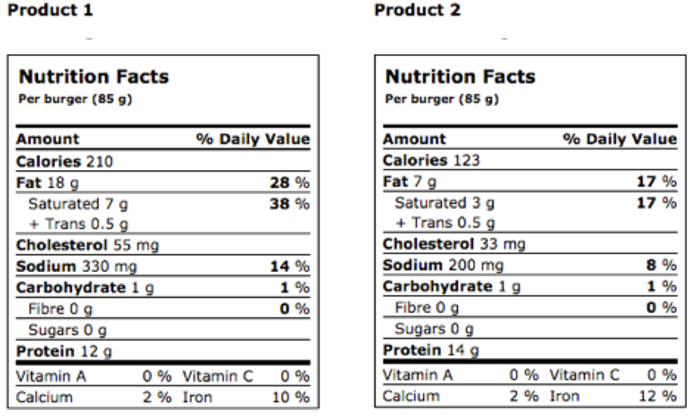


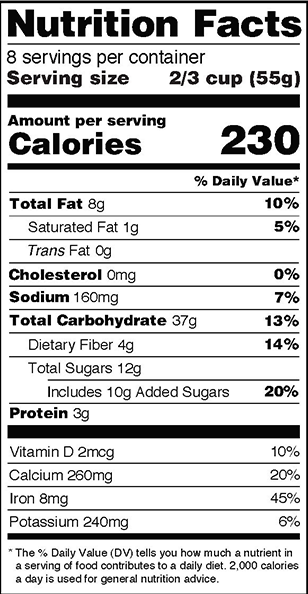

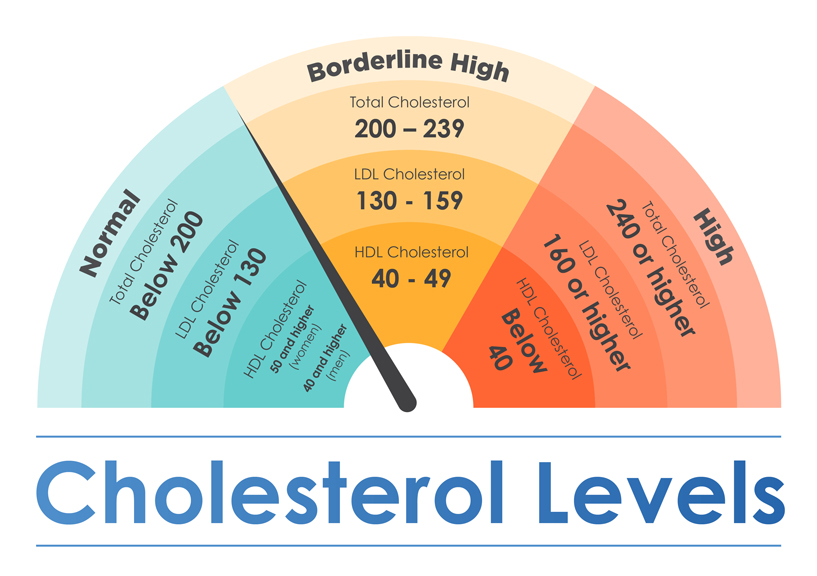


Post a Comment for "39 reading food labels cholesterol"